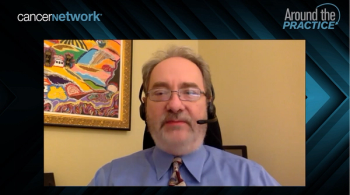
Genetic Patterns Could Help Doctors Identify Ultra High Risk Patients of Multiple Myeloma
A study analyzed a test for specific gene patterns that could indicate that a patient will not respond to standard treatment for newly diagnosed multiple myeloma.
Researchers found a new test that could help doctors pick out patients with multiple myeloma whose cancers have high-risk genetic features to determine they are at ‘ultra high risk’ of early and aggressive cancer progression, according to a recent study published in Leukemia.1
Specific genetic patterns were shown to have a poorer survival rate than average, resulting in little benefit from treatment with the drug lenalidomide. The test allows for clinicians to direct patients to alternative treatment options if it shows patients are unlikely to respond to the standard treatment.
“Our results demonstrate that patients with double-hit or GEP high-risk status are unlikely to benefit from current treatment approaches, including single agent lenalidomide maintenance therapy,” wrote the researchers. “In such patients intensified ongoing therapy with combination agents may be beneficial.”2
The researchers analyzed abnormal gene activity and genetic mutations in people at ultra high risk with the goal of finding out how aggressive the cancer is, how quickly it spreads, and how likely it is to respond to treatment with lenalidomide.
A total of 81 patients were found to have cancers with a pattern of genes linked to high-risk status known as the SKY92 signature. On average, these patients were up to 3 times more likely for their cancer to return early. The focus was patients with the SKY92 signature and double-hit genetic features, which made up about 10% of the population. Researchers determined these patients were highly unlikely to benefit from lenalidomide treatment as ongoing or maintenance therapy.
The phase III Cancer Research UK Myeloma XI trial analyzed 329 patients across a number of United Kingdom hospitals and how effective a number of drugs were, including lenalidomide, in patients of multiple myeloma.
"Testing for high-risk genetic features could help target myeloma treatment, focusing on the specific needs of each patient,” said study lead Dr. Martin Kaiser in a press release. “Not all patients with myeloma are the same, and we know that by better understanding their cancer's genetic and molecular features, we can tailor their treatment much more effectively. “
One significant limitation to the study was the population consisted of younger, fitter, transplant-eligible patients compared to a more representative population of potential patients. This introduces the variable that clinical risk markers may have a greater significance to older patients than what the data discovered.
The researchers are working to combine these results with an ongoing OPTIMUM trial to ultimately tailor treatment for ultra high risk patients more effectively. The results will help divide patients into subgroups to better target effective therapies for their disease.
“Our results demonstrate the prospective prognostic validity of SKY92 profiling in the wider context as a means of identifying patients at diagnosis who have high-risk multiple myeloma, and show the independent association of SKY92 and high-risk chromosomal aberrations with outcome,” wrote the researchers.
References:
1. Genetic test could pick out 'ultra high risk' bone marrow cancer patients [news release]. Published March 10, 2020.
2. Shah V, Sherborne AL, Johnson DC, et al. Predicting ultrahigh risk multiple myeloma by molecular profiling: an analysis of newly diagnosed transplant eligible myeloma XI trial patients. Leukemia. https:// doi.org/10.1038/s41375-020-0750-z.
Newsletter
Stay up to date on recent advances in the multidisciplinary approach to cancer.
































































































